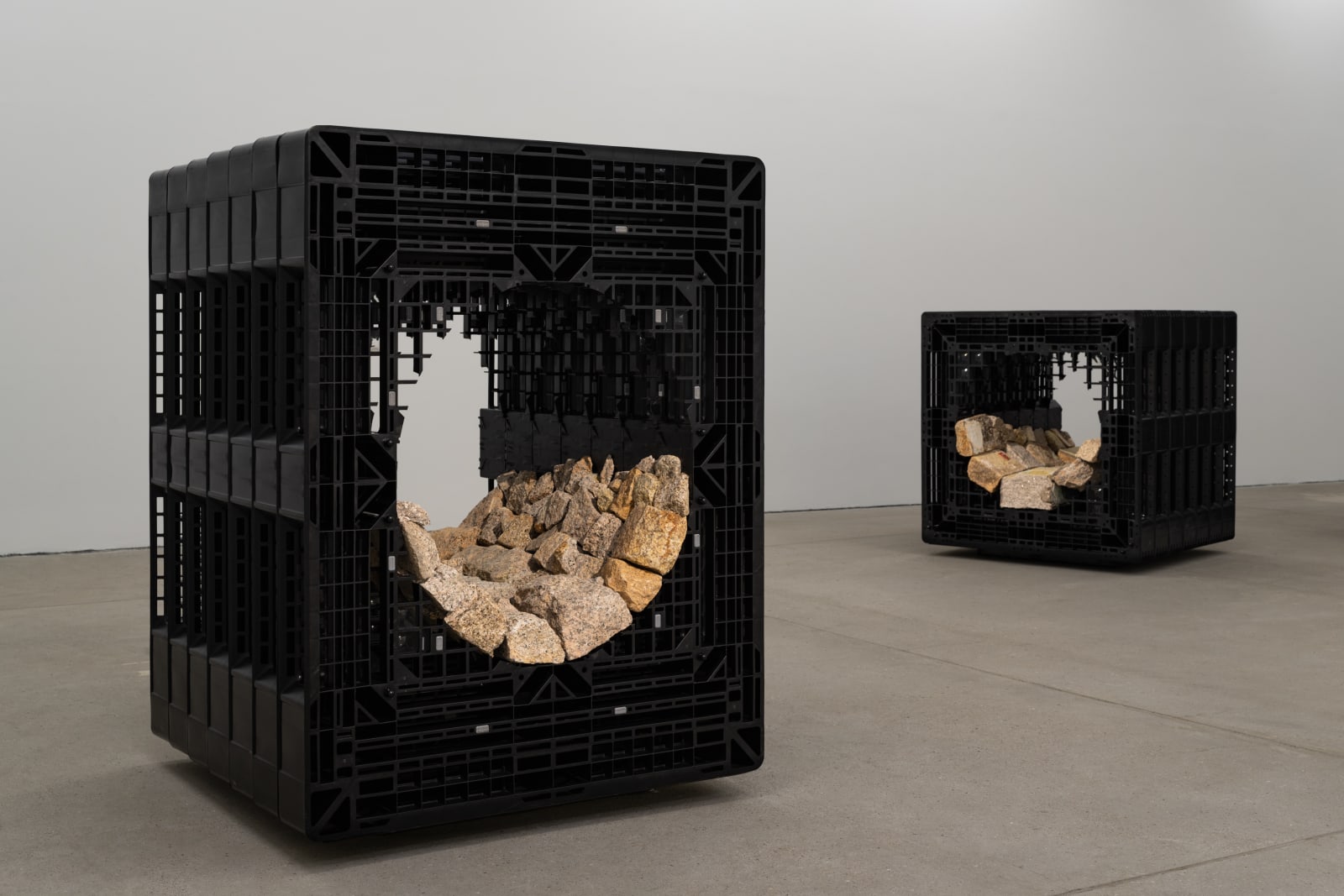Leelee Chan 陳麗同
Pallet in Repose (Barren Rock) 《凝佇之盤(荒石)》, 2021
used plastic pallets, reclaimed granite, stainless steel threaded rod and head nuts, iron structures, resin, pigment. 二手塑膠卡板、回收花崗岩、不銹鋼螺絲杆及螺絲帽、鐵架、樹脂、顏料


